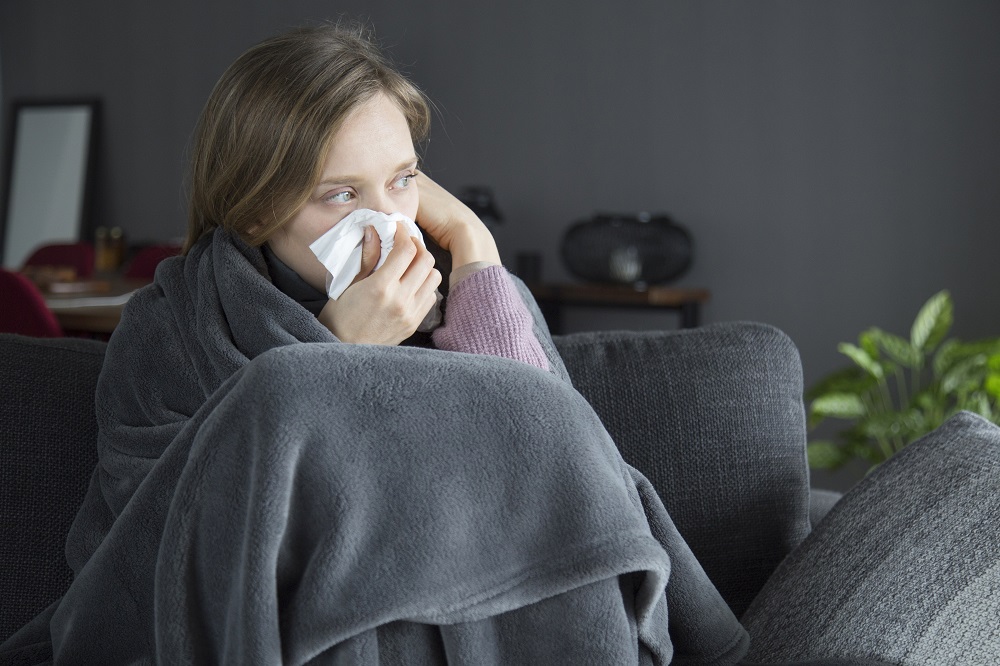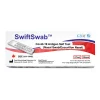It’s well-known that the flu is highly contagious.
However, recent studies reveal new ways the virus can spread—knowledge that could change how you protect yourself and others.
Influenza: Overview
The flu, short for influenza, is a contagious respiratory illness caused by influenza viruses that affect your:
- Nose
- Throat
- Lungs, sometimes
With severity ranging from mild to serious, flu symptoms include:
- Fever
- Cough
- Sore throat
- Runny or stuffy nose
While most people recover within a few days, some—especially young children, the elderly, and individuals with underlying health conditions—are at risk of severe complications like pneumonia.

How is the flu transmitted?
The flu spreads through the air and by direct contact with contaminated surfaces. When an infected person coughs, sneezes, or talks, tiny droplets carrying the virus are released into the air and can be inhaled by others, especially in crowded or poorly ventilated spaces.
It can also spread when you touch contaminated surfaces, like doorknobs or phones, and then touch your mouth, nose, or eyes, as this gives the virus direct entry into your body.
Can you catch the flu from breathing?
Since the flu virus spreads through the air, you can catch it simply by inhaling droplets that contain the virus. When someone with the flu coughs, sneezes, or even talks, tiny droplets carrying the virus are released into the air. If you’re near by and inhale these droplets, you can become infected.
Now, in a study conducted by the University of Maryland, results show that individuals with the flu can release infectious virus particles into the air simply by breathing, without needing to cough or sneeze. These tiny aerosol droplets can linger in the air for extended periods, particularly during the early days of illness when people are most contagious.
Factors increasing the risk of catching the flu
Several factors significantly increase the risk of catching the flu.
- Proximity to an infected person. Being near someone who has the flu significantly raises your chances of inhaling virus-laden droplets.
- Crowded spaces like public transport or schools. Environments with many people in close quarters increase the likelihood of flu transmission.
- Enclosed spaces with little air circulation. The lack of proper ventilation in closed environments lets the flu virus concentrate in the air, heightening the risk of infection.
How do you prevent the flu?
Practicing preventive measures not only protects your health but also helps safeguard the well-being of your community. Here’s how you can reduce the risk of spreading or catching the flu:
- Get vaccinated annually. Vaccination is your first line of defense against the flu. Each year, flu vaccines are updated to target the most prevalent strains, ensuring you have the best protection available.
- Practice good hygiene. Regular hygiene habits are essential in stopping flu transmission. These include washing your hands frequently and using alcohol-based hand sanitizers when soap and water aren’t available.
- Wear masks in crowded or high-risk areas. Masks serve as a protective barrier that reduces your chances of inhaling airborne droplets that carry the flu virus.
Why is it important to prevent the flu?
Prioritizing flu prevention isn’tjust about protecting yourself, but also about contributing to a healthier and safer environment for everyone. Here is a closer look at these reasons:
- Reduction of the virus’ spread. Preventive measures limit how far the flu virus can spread, helping to protect those around you.
- Protection of vulnerable groups. Flu prevention is vital for shielding those at higher risk, like the elderly, children, and individuals with health conditions, from severe complications.
- Easing of healthcare burdens. Fewer flu cases mean less strain on hospitals and medical resources, ensuring better care for all.
Frequently asked questions
Is inhaling air in close proximity to an infected person a common way to contract the flu?
Yes, inhaling air near an infected individual can lead to flu contraction. The virus spreads through droplets expelled when a sick person coughs, sneezes, or talks.
Can flu viruses be transmitted through the air over long distances?
Flu viruses primarily spread through short-range airborne droplets. Transmission over long distances through the air is not typical for the flu virus.
Does wearing a mask effectively reduce the risk of catching the flu from airborne particles?
Wearing a mask can significantly reduce the risk of inhaling flu viruses. Masks act as a barrier to prevent respiratory droplets from entering the nose and mouth.
How long can flu viruses remain airborne and potentially infectious?
Flu viruses in respiratory droplets can remain airborne for several minutes. However, the time varies based on environmental conditions like humidity and airflow.
Is it possible to catch the flu by breathing in air after an infected person has left the room?
Catching the flu requires close contact with an infected person or their respiratory droplets. Once the person leaves, the risk significantly decreases but is not entirely eliminated.
Key takeaway
While it was long believed that the flu spreads primarily through coughing or sneezing, new research reveals that the virus can also be transmitted just by breathing.
Understanding how the flu spreads and adopting preventive measures, like vaccination, good hygiene, and wearing masks, are essential for protecting yourself and those around you.
If you’re feeling under the weather, check out our shop for reliable rapid tests to quickly identify what you have and take the right steps to recover.






















































